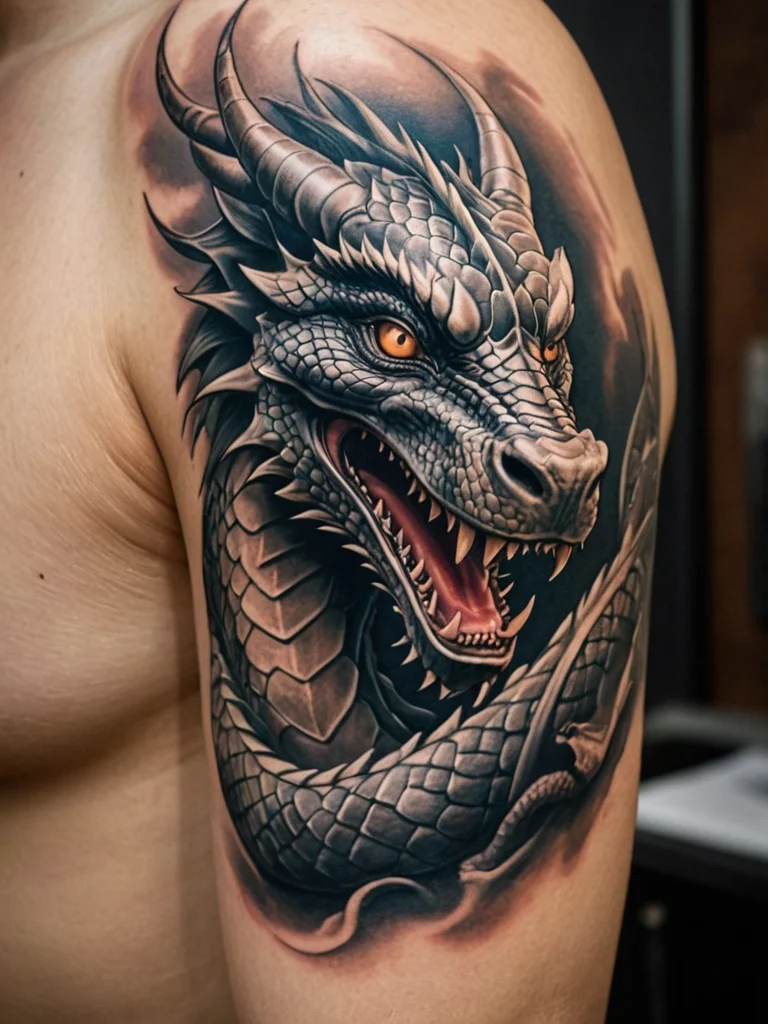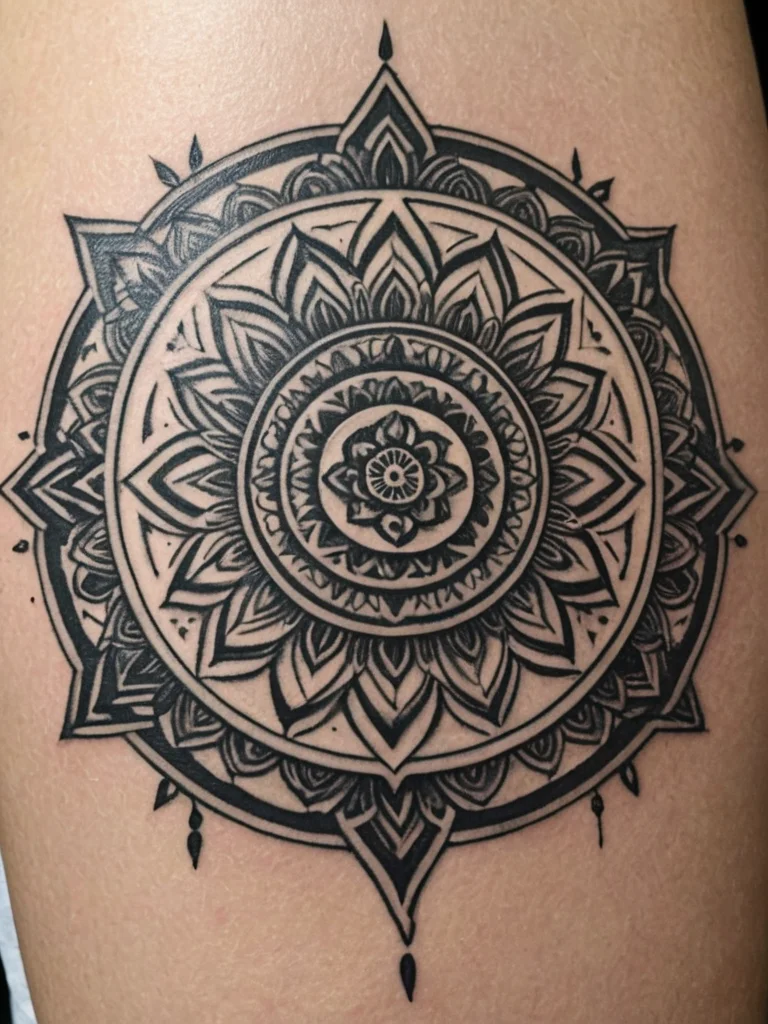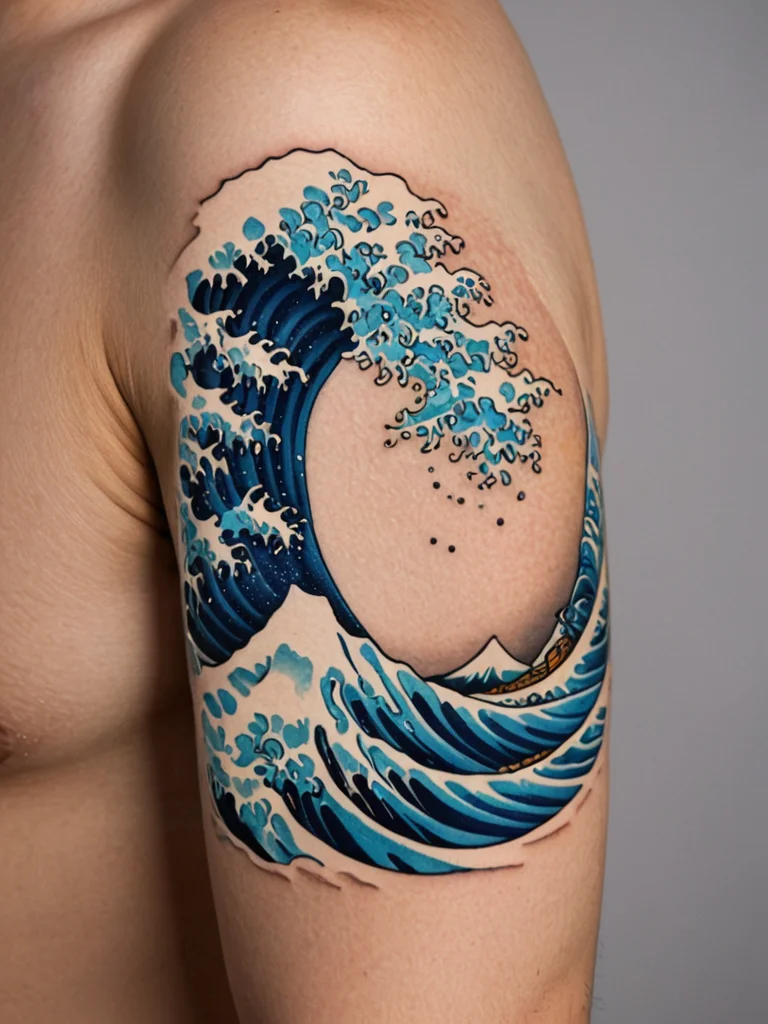In the intricate world of tattooing, precision and consistency are paramount. Every artist understands that a flawless tattoo begins long before the needle touches the skin. It starts with a perfect stencil – the blueprint that guides the hand and ensures the final design is exactly as envisioned. For professionals and aspiring tattooists alike, the quality of the tools used to create these stencils can make a significant difference. This guide delves into the essential equipment for creating high-quality stencils: the printers and papers that bring your designs to life, ensuring accuracy, durability, and client satisfaction.
Why every tattoo artist needs a reliable stencil printer
The journey of a tattoo from concept to skin is a carefully orchestrated process, and the stencil is the crucial first step. Historically, tattoo artists would meticulously hand-draw each stencil, a time-consuming and often less precise method. Today, advancements in technology offer far more efficient and accurate solutions. A reliable stencil printer is not just a convenience; it’s a fundamental tool that elevates the quality of your work and the professionalism of your studio. It ensures that intricate details, sharp lines, and accurate proportions are transferred to the skin faithfully. This consistency builds client trust, as they see the meticulous preparation involved. Furthermore, a good printer saves invaluable time, allowing artists to focus more on the creative and interpersonal aspects of tattooing. It’s about minimizing errors and maximizing the potential for a stunning, long-lasting piece of body art. Imagine trying to replicate a complex geometric pattern or a delicate portrait outline by hand every single time – the potential for slight variations is immense. A printer eliminates this variability, providing a crisp, clean, and exact representation of your design, ready for application. This attention to detail is what separates a good tattoo from a truly exceptional one, and it begins with the stencil.
The importance of a dedicated tattoo stencil printer extends to hygiene and workflow efficiency as well. While some artists might consider using a standard office printer, these are not designed for the specific demands of stencil transfer. Tattoo stencil printers and their accompanying inks are formulated for direct skin application and durability. They are designed to withstand the rigors of the tattooing process, ensuring the stencil remains visible and intact throughout the session, even with the application of rinse cups and stencil transfer gels. This prevents accidental smudging or fading, which can lead to critical mistakes during the tattoo. Moreover, using a dedicated printer streamlines the preparation process. Instead of relying on potentially messy carbon paper or freehand drawing for every element, artists can quickly print multiple stencils for a single design or for different clients, maintaining a clean and organized workspace. This efficiency is invaluable in a busy studio environment where time is of the essence and maintaining a sterile field is non-negotiable. The printer becomes an extension of the artist’s digital design workflow, seamlessly bridging the gap between screen and skin.
Consider the client’s perspective. A professional setup, which includes a well-produced stencil, communicates a high level of skill and care. It shows that you are invested in providing the best possible outcome. When a client sees a crisp, perfectly placed stencil, it instills confidence in their choice of artist. It’s a visual guarantee of the quality they can expect. Moreover, for artists who often work with custom designs, the ability to quickly and accurately print these unique creations is essential. It allows for a personalized experience, ensuring that the client’s vision is meticulously translated onto their skin. The digital to physical transfer needs to be as seamless and precise as possible, and a dedicated printer is the most effective tool for achieving this.
Top tattoo stencil printers: a comparative buyer’s guide

When you’re in the market for a tattoo stencil printer, you’ll encounter a range of options, each with its own strengths and weaknesses. The most popular and widely recommended category is the thermal printer, specifically those designed for stencil duplication. These machines work by heating a special thermal ribbon, which then transfers a carbon-based ink onto the stencil paper. The result is a crisp, dark, and incredibly durable stencil line that transfers cleanly to the skin. Brands like Brother and Sharp are frequently cited for their reliability and the quality of the stencils they produce. Specifically, models like the Brother PocketJet series are a favorite among tattoo artists due to their compact size, portability, and the exceptional clarity of their prints. These printers are often favored for their ability to handle fine details and complex shading, which is crucial for intricate tattoo designs.
When selecting a thermal printer, consider factors such as print resolution (measured in DPI – dots per inch), print speed, and connectivity options. A higher DPI generally means a sharper, more detailed stencil. While many standard office thermal printers can produce stencils, tattoo-specific printers are often built with more robust components and offer finer control over the printing process. Look for printers that are known for their long-term reliability and the availability of compatible stencil paper and thermal transfer ribbons. Some artists also prefer printers that offer wireless connectivity, allowing them to send designs directly from their tablets or laptops without the need for cumbersome cables, enhancing studio mobility and organization.
Another aspect to consider is the cost of ownership. While the initial investment in a quality printer can be significant, factor in the ongoing costs of consumables like thermal paper and ink ribbons. Some printer models might offer lower upfront costs but have more expensive replacement parts or require more frequent servicing. Reading reviews from other tattoo artists is invaluable in this regard. They can provide insights into the real-world performance and longevity of different printer models. It’s also worth investigating printers that come bundled with starter kits or offer good warranty support. For example, some manufacturers offer printers specifically marketed for tattoo stenciling, which often come pre-loaded with features and settings optimized for stencil creation, potentially saving you time and frustration in the setup phase.
While thermal printers dominate the market, some artists explore other technologies. However, for stencil creation, the clarity, permanence, and cost-effectiveness of thermal printing are hard to beat. The key is to match the printer’s capabilities with the complexity of the designs you typically create. If you specialize in large-scale, detailed realism, you’ll need a printer with a higher resolution than someone focusing on minimalist line work. Always check the printer’s compatibility with common stencil paper types and ensure that replacement parts and consumables are readily available to avoid workflow interruptions.
Choosing the best stencil paper for your needs: types and recommendations

The paper you use for your stencils is just as critical as the printer itself. The right stencil paper ensures that the printed design transfers cleanly and accurately to the skin, without bleeding or smudging. There are several types of stencil papers available, each with its own characteristics and best use cases. The most common type is the purple, carbon-based stencil paper, often referred to as thermal stencil paper. This paper consists of several layers: a top sheet for the design, a layer of carbon for transferring the image, a protective sheet, and a backing sheet. When the thermal printer heats the carbon layer, it melts the carbon onto the top sheet, creating the stencil.
When selecting stencil paper, look for brands that are known for producing deep, consistent lines. High-quality paper will have a smooth surface that accepts ink well and a carbon layer that transfers with minimal pressure. Some papers are thicker than others, which can affect how they conform to the body’s curves. Thinner papers might be more pliable, making them ideal for wrapping around limbs or other contoured areas, while thicker papers might offer more durability for longer sessions. Personal preference plays a significant role here, so experimenting with different brands and types is often necessary to find what works best for your style.
Consider the contrast and saturation of the transferred image. Some papers produce a bolder, darker line, which can be easier to see on various skin tones. Others may be lighter, requiring careful application of stencil transfer gel. The longevity of the stencil on the skin is also a factor. Some papers create stencils that adhere more effectively, lasting through the entire tattooing process without fading. This is particularly important for extended sessions where the stencil needs to remain pristine for hours. Reading reviews and seeking recommendations from experienced artists can guide you toward reliable options. Popular choices often include brands like Spirit, S8, and Fusion Ink, which are widely trusted in the industry for their consistent performance.
For artists who prefer a more traditional method or want an alternative to thermal printing, freehand stencil paper is also available. This type of paper is designed to be drawn on directly with specialized stencil pens or markers. While it doesn’t offer the same level of precision as a printed stencil for complex designs, it can be a viable option for simpler tattoos or for artists who excel at freehand drawing. However, for the vast majority of professional tattoo artists today, thermal stencil paper remains the standard due to its accuracy and efficiency when used with a compatible thermal printer.
Maximizing your stencil quality: tips for printing and application

Achieving a perfect stencil goes beyond just owning the right equipment; it involves mastering the printing and application process. The first crucial step is ensuring your digital design is optimized for stencil transfer. This means using high-contrast black and white images, with sharp lines and no unnecessary gradients or fine details that might blur during printing or transfer. Many design software programs have specific settings or filters that can help prepare your artwork for stenciling. Artists often recommend using vector graphics for line work whenever possible, as they scale cleanly without losing resolution.
When printing, ensure your printer settings are correctly configured for stencil paper. Most thermal printers have specific modes or drivers designed for this purpose, which optimize ink density and transfer speed. Always perform a test print on a scrap piece of stencil paper before committing to your final design. This allows you to check for any smudges, gaps, or imperfections in the print quality. Pay attention to the printer’s thermal head; keeping it clean ensures consistent heat application across the entire surface of the paper, which is vital for a clear stencil. A dirty thermal head can lead to faint lines or incomplete transfers.
The application of the stencil to the skin is equally important. Clean the client’s skin thoroughly with soap and water and an antiseptic solution. Shave the area where the tattoo will be placed to ensure a smooth surface for the stencil to adhere to. Apply a thin, even layer of stencil transfer gel or spray. Too much gel can cause the stencil to slide and blur, while too little may prevent it from adhering properly. Once the gel is slightly tacky, carefully place the stencil onto the skin, pressing gently from the center outwards to avoid trapping air bubbles. Hold it in place for a few seconds to allow it to adhere. Avoid repositioning the stencil once it has made contact with the skin, as this can distort the image.
Once the stencil is applied, inspect it carefully. Check that all lines are crisp and clear. If there are any minor smudges or imperfections, some artists use a fine-tipped marker or a sterile needle to make small adjustments, but it’s always best to aim for a perfect transfer initially. Allow the stencil to dry completely before you begin tattooing. Some artists use aerosol stencil fixatives for extra security, especially on areas that are prone to movement or moisture, but ensure these are safe for skin contact and properly ventilated. The goal is a stencil that is visible, durable, and accurately represents your artwork, providing a clear roadmap for the tattooing process.
Beyond the basics: advanced stenciling techniques and troubleshooting

For tattoo artists looking to push the boundaries of their craft, mastering advanced stenciling techniques can unlock new levels of precision and creativity. One such technique involves creating multi-part stencils for complex designs. This might include separate stencils for linework, shading, and color packing. By layering these stencils accurately, artists can ensure perfect alignment for each stage of the tattooing process, especially critical for intricate realism or geometric patterns. This approach requires meticulous planning and precise application of each stencil layer.
Another advanced method is the use of digital stencil design software that allows for scaling, mirroring, and even simulating how a design will appear on a specific body part. Some software can help visualize the flow of the tattoo along the contours of the skin, allowing for adjustments to the stencil before printing to ensure it wraps correctly and looks natural when applied. This digital preparation minimizes errors and saves time during the actual tattooing session. Many artists also explore custom stencil papers or modifications to standard papers for specific needs, such as enhanced adhesion or a clearer transfer on darker skin tones.
Troubleshooting common stencil issues is also part of becoming a proficient artist. If your stencil is consistently faint or incomplete, it could be an issue with your printer’s thermal head needing cleaning, the printer settings being incorrect, or the quality of the stencil paper. Ensure you are using high-quality, compatible thermal paper and that the printer is set to the appropriate density for stencil printing. If the stencil blurs or smudges during application, it usually means too much stencil transfer solution was used, or the stencil was handled too soon after application. Experiment with the amount of gel and allow adequate drying time. If the stencil doesn’t adhere well, try a different transfer gel or ensure the skin is properly prepped and shaved.
For artists working with very large tattoos or intricate patterns that require extreme precision, exploring methods like UV-reactive stencil ink or specialized transfer papers can be beneficial. These might offer enhanced visibility under studio lighting or better adhesion in challenging areas. Ultimately, the pursuit of stencil perfection is an ongoing process of learning, experimentation, and refinement. By understanding the nuances of your equipment, the properties of your materials, and the techniques for application, you can ensure that every stencil you create is a testament to your skill and dedication, laying the foundation for truly remarkable tattoo art.